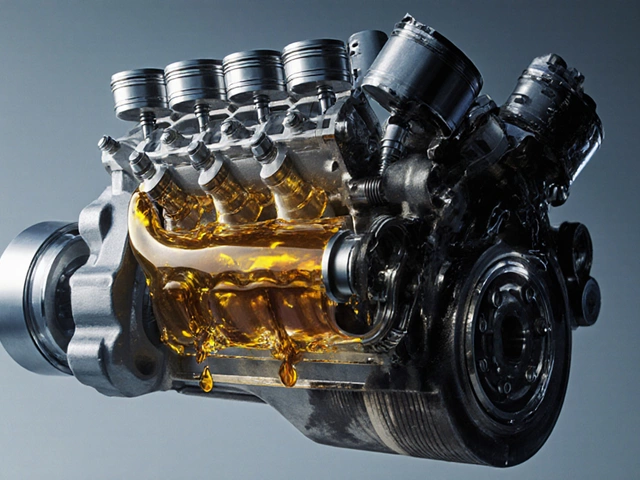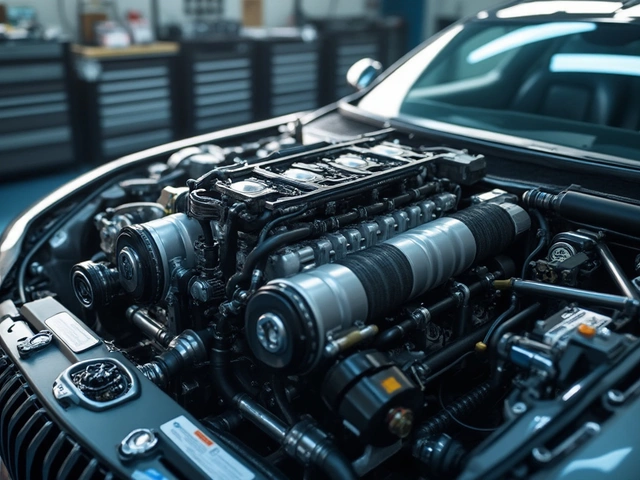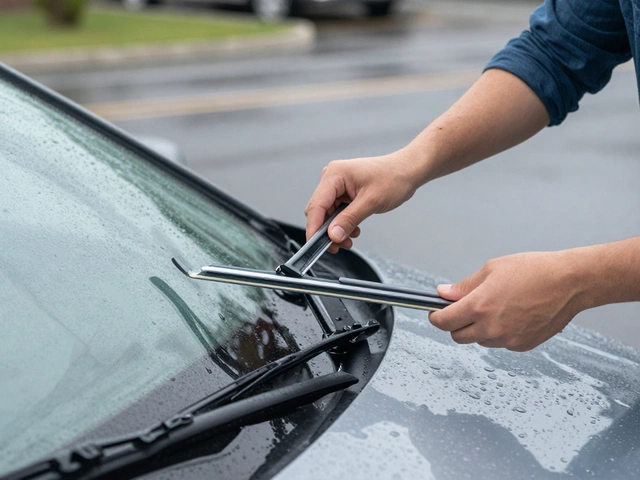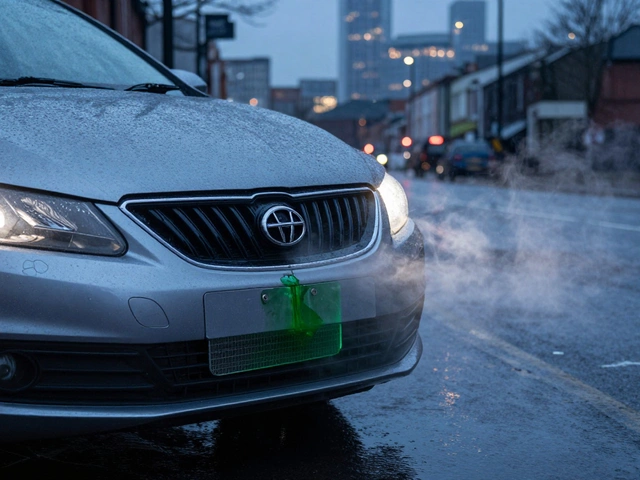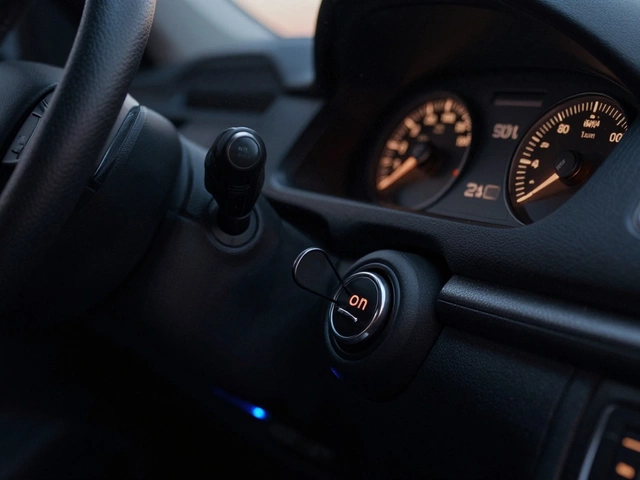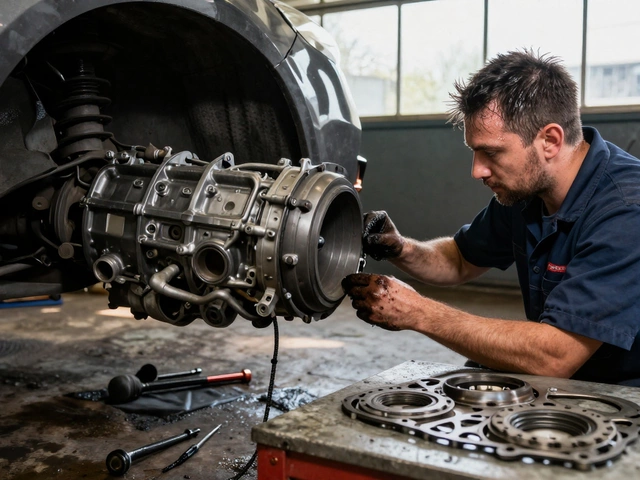Ever had to squint through streaky glass on a rainy day? That’s usually your wiper blades hinting they’re done for. Good wiper blades aren’t just about comfort—they’re real safety gear. If they aren’t clearing water or gunk smoothly, your vision takes a hit, especially at night or during storms.
Most folks forget about wiper blades until they’re smearing, squeaking, or leaving annoying lines. But waiting for those signs can backfire. Replacing them on time means fewer surprises when the sky opens up or when you hit those bug-heavy country roads. There’s a simple rhythm to it, and a few easy tricks can help you figure out if yours are up for the job or ready for retirement.
- Why Wiper Blades Matter
- Typical Lifespan and Replacement Timing
- Spotting Worn-Out Blades
- Weather and Environmental Effects
- DIY Checks and Maintenance Tips
- Common Mistakes to Avoid
Why Wiper Blades Matter
You might not think much about your wiper blades until they let you down. But here’s a thing: clear views keep you safe, and the job of those skinny strips of rubber is way more important than most drivers realize. Good wipers give you the visibility you need for fast decision making in bad weather—rain, snow, or even that random road spray from trucks.
According to stats from the National Highway Traffic Safety Administration, poor visibility is a top factor in thousands of weather-related accidents every year. Road grime, pollen, and even bug guts can stick like glue to your windshield. Without working wipers, your washer fluid alone can't cut it. And old or damaged blades usually just smear the mess, making things even worse.
Water doesn’t seem like a big deal unless you’re caught in a downpour on the freeway. If your blades can’t keep up, hydroplaning and nervous braking become a real risk. Modern cars rely more and more on cameras and sensors for things like lane keeping and parking assist, and those need a crystal-clear windscreen to work right. Forgetting your wiper blades can mess with those fancy features.
Think about it: your tires and brakes work hard to keep you safe, but if you can’t see where you’re going, all the tech in the world won’t help. That’s why regular wiper care is non-negotiable if you want every drive to be as safe as possible.
Typical Lifespan and Replacement Timing
So, how often should you actually swap out your wiper blades? Most car pros and automakers say every 6 to 12 months is a safe bet. But there isn’t a magic number for everyone—things like where you live, how often you drive, and your car’s exposure to sun or grit can speed up wear.
Here’s a simple breakdown:
| Condition | Expected Wiper Blade Lifespan |
|---|---|
| Hot and sunny climate | 6 months or less |
| Cold or snowy areas | 6-9 months |
| Moderate use, mild conditions | Up to 12 months |
| Frequent road salt, dust, tree sap | Closer to 6 months |
The rubber on wiper blades takes a beating from heat, UV from the sun, and even using them dry. If you park outside a lot, you might notice them cracking or stiffening faster.
If you want a quick hack, set a reminder in your phone for when the seasons change. Swapping out your blades every spring or fall helps you beat any surprises when you really need that clear view.
- Check your owner’s manual if you’re unsure—some cars need special blade types or sizes.
- Don’t just wait for squeaks. If you see streaking, skipping, or hear loud noise, it’s a hint they’re past their prime.
- Even if you don’t drive much, wiper blades still age just sitting in the weather.
Keep an eye on how your wipers perform every month or so, especially if you live somewhere rough on rubber. Timely replacements mean better visibility, less stress, and a safer drive whenever the weather turns crazy.
Spotting Worn-Out Blades
There’s nothing subtle about a dying set of wiper blades. If you know what to look for, you’ll catch the issues before your windshield turns into a blurry mess.
Here’s what gives away wiper blades that need replacing:
- Wiper blades start leaving streaks. If your windshield isn’t clear after a swipe, the rubber edge has usually lost its shape or developed small cracks.
- Your wipers make chattering or squeaking noises. This happens when the blade doesn’t hug the glass evenly—normally because the rubber is hard or warped.
- There are visible splits, cracks, or missing chunks in the rubber. Run your finger along the blade, and you’ll feel them.
- The blade skips or jumps across the glass. This means it can’t keep steady contact, so you get patchy cleaning.
- You see smears from bugs, pollen, or mud that won’t wipe away, even after a few passes.
Plenty of drivers ignore those early signs until they’re squinting through a mess during a downpour. Don’t be that person—cautious drivers check their wipers every couple of months.
| Sign | What It Means | Typical Cause |
|---|---|---|
| Streaking | Poor visibility, lines left behind | Cracked, dry, or worn rubber |
| Chattering Noise | Wipers jump or skip on glass | Rubber has hardened or warped |
| Unwiped Patches | Parts of window stay dirty | Edge has lifted or fragmented |
| Broken Rubber | Chunks missing, rough edges | Weathering, old age, UV damage |
If you spot any of this, don’t put off the swap. Fresh blades mean you’re prepared for whatever the road or weather throws at you.

Weather and Environmental Effects
Not all wiper blades wear out the same way. Where you live and the weather you drive in make a big difference. Hot summer sun, freezing winters, salty road spray, and even those endless bugs on your windshield—each takes a toll on your wipers.
Hot climates can dry out wiper rubber fast. UV rays from the sun break down the blade material, making it crack and lose its grip on the glass. The blade basically gets cooked, especially if you’re parking outside a lot. In cold places, the rubber goes stiff, sometimes even freezing to the glass. Ice and snow can shred the blade edge or let chunks break off.
If you drive where roads get salted in winter, that salty slush splashed onto your windshield can eat away at your wipers. And don’t forget city grime, tree sap, and bugs—they all add grit and rough stuff that the rubber keeps dragging across, wearing it down faster. All those things add up, so a wiper in Arizona, Ontario, or Florida might need swapping at different times, even with the same amount of use.
Check out how climate and conditions can shorten your wiper’s lifespan:
| Condition | Effect on Wipers | Expected Lifespan |
|---|---|---|
| High Heat & Sun | Rubber cracks, hardens, loses flexibility | 6-9 months |
| Cold Weather & Ice | Edge chips, rubber stiffens | 6-12 months |
| Coastal/Salt | Rubber and frame corrodes | 6 months or less |
| Trees/Bugs | Sticky buildup, blade smears | As low as 6 months |
| Mild/Indoor Parking | Minimal slow wear | 12-18 months |
If you want to help your wiper blades last, give your windshield a quick rinse now and then and try not to run your wipers on a dry window. If you have to park outside, flipping the blades up during snow or heatwaves keeps them from baking or freezing to the glass.
DIY Checks and Maintenance Tips
Wiper blades don’t have to surprise you by failing at the worst moment. Checking and keeping them in shape is simple—you just need a couple of minutes every month. Most drivers skip basic checks, but doing them regularly can buy you extra months of clear vision.
First off, lift the wiper arm away from the windshield. Run your finger along the blade’s edge—if it’s chipped, rough, or feels hard instead of flexible, it’s time to swap it. Dirt stuck on the rubber can scratch your glass, so give the blades a gentle wipe using a damp cloth or paper towel. If you see splits or the blade doesn’t snap right back into its shape, replace it.
Here’s a tip: Don’t forget the wiper blades in summer. Sunlight cooks rubber, making it crack and wilt way faster. Park in the shade when you can. Some folks pop the arms up off the glass during winter to stop them freezing down—worth trying if you get lots of ice.
"A quick monthly check and clean can almost double your wiper blade’s lifespan. It’s the most overlooked safety check in car care." — Auto Care Association
Try this routine once a month:
- Lift the wiper arm from the windshield.
- Check for cracks, splits, or uneven edges.
- Wipe the blade with a damp cloth, removing any dirt or bug residue.
- Test the blade on the glass. If it leaves a streak or jumps, it’s on its last legs.
If you're asking how bad things have to be before you replace them, here's a useful little cheat sheet:
| Sign of Wear | What To Do |
|---|---|
| Streaks on glass | Clean blades, then retest; if streaks stay, replace |
| Squeaking/chattering | Try cleaning first, but squeaks often mean it's replacement time |
| Blade skips or misses areas | Replace—rubber likely hardened or warped |
| Visible cracks or splits | Replace immediately |
Don’t let wiper blades become an afterthought. Regular DIY checks mean you won’t get caught out in the rain—or have to squint through bug guts on the highway!
Common Mistakes to Avoid
People make a lot of easy-to-miss mistakes when it comes to wiper blades, and these slip-ups can leave you with poor visibility—or worse, a damaged windshield. One classic goof is waiting until the middle of a storm to notice your wiper blades aren’t working right. Don’t be that person who grabs the nearest rag and tries to fix the problem at a stoplight.
Another common mistake? Mixing up blade sizes or getting the wrong type for your car. Blades aren’t one-size-fits-all, so always check your manual or use those sizing guides in auto parts stores. Installing blades upside down or not snapping them in securely happens more than you’d think—double-check that click when you put them on.
One of the fastest ways to trash wipers is using them to clear ice or heavy snow. Those thin rubber edges aren’t built for scraping; you’ll just tear them up and risk bending the arm. Always clear the window with a proper scraper before you hit the wipers on frosty days.
People also forget that cleaning the wiper itself can make a huge difference. Dirt, sap, or bug guts on the rubber can cause streaks and shorten the blade’s life, so wipe them down regularly with a soft cloth and some glass cleaner.
- Don’t ignore signs like streaking, skipping, or squeaking—these mean it’s time to replace.
- Never top off your windshield washer fluid with plain water, especially in cold months. That can freeze up your lines and make things worse for your blades and pump.
- Avoid letting old blades sit on the windshield for months unused, especially in sunny weather. UV light bakes the rubber, making it brittle and useless just when you need it.
If you dodge these mistakes, you’ll save money on replacements and avoid those shaky, nerve-wracking moments when visibility drops right when you need it most.

